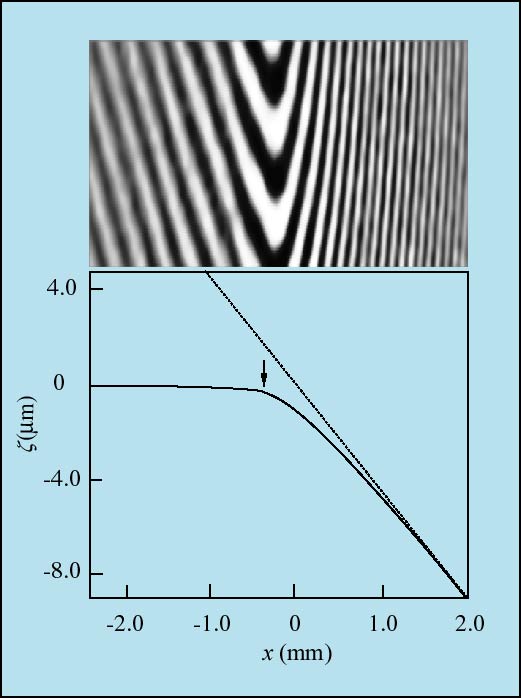
First indications of subtle deficiencies in this theoretical picture were obtained in the high-resolution interferometric experiments performed on static properties of crystal facets [PRL75, 3324 (1995)]. The theoretically expected power-law behavior was found to change discontinuously into an exponential relaxation as a facet was approached. Such a discontinuous change in the orientation of the interface is a clear indication of a first-order phase transition on the surface, which is very difficult to explain within the framework of current theoretical models.
FIGURE Surface profile for one of our crystals. Far enough from the edge, the interface follows the direction of the gravitational horizon (indicated by a line), whereas closer to the facet edge the crystal shape is governed by the surface stiffness. The vertical arrow marks the point of slope discontinuity where the ordinary power-law crosses over to exponential behavior.